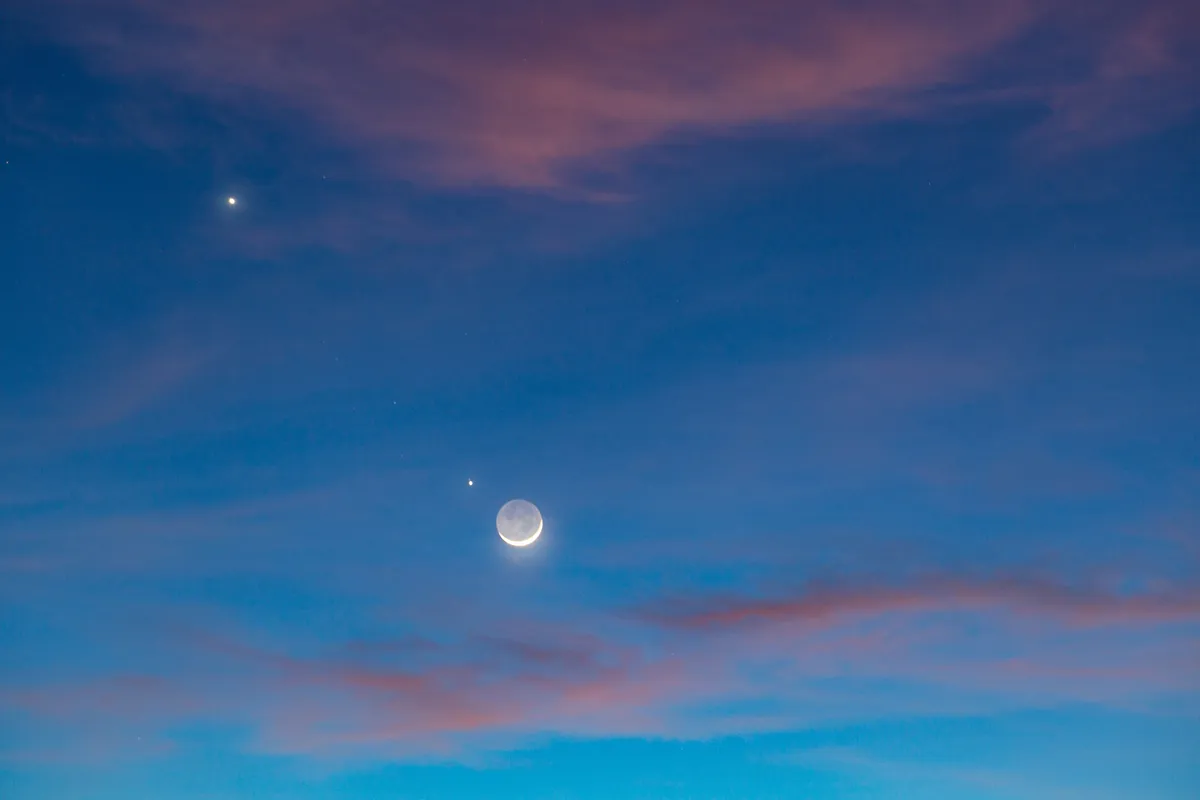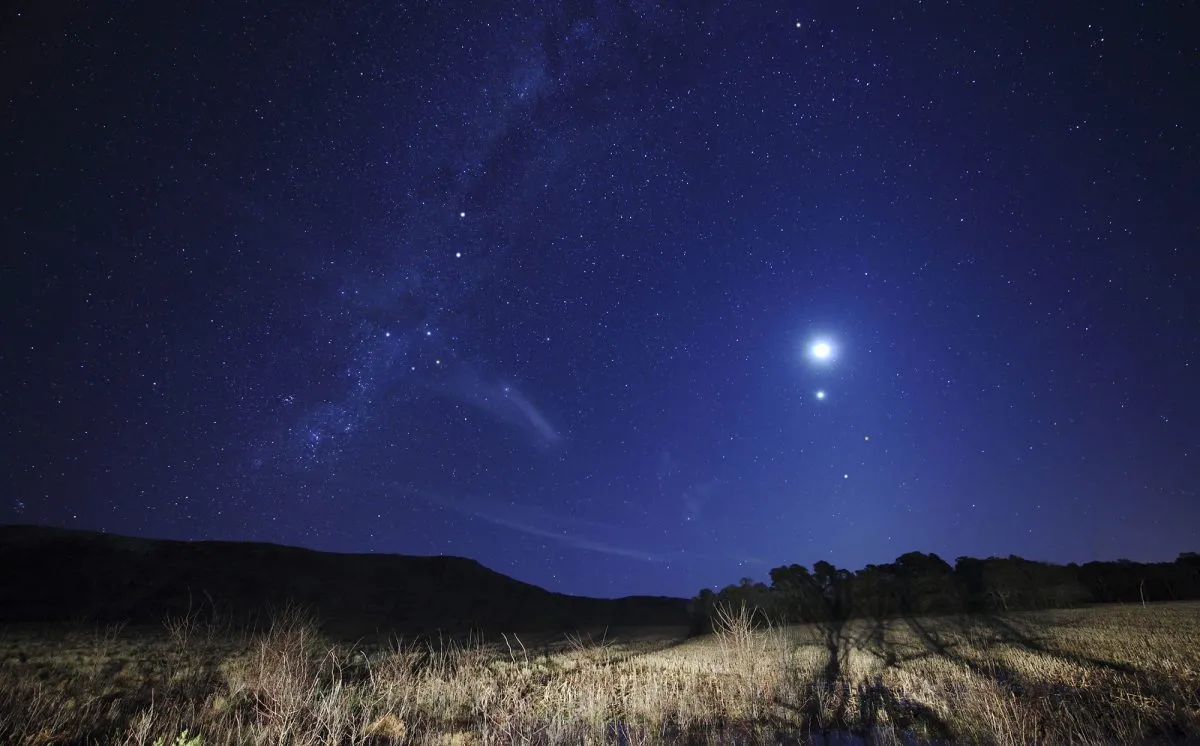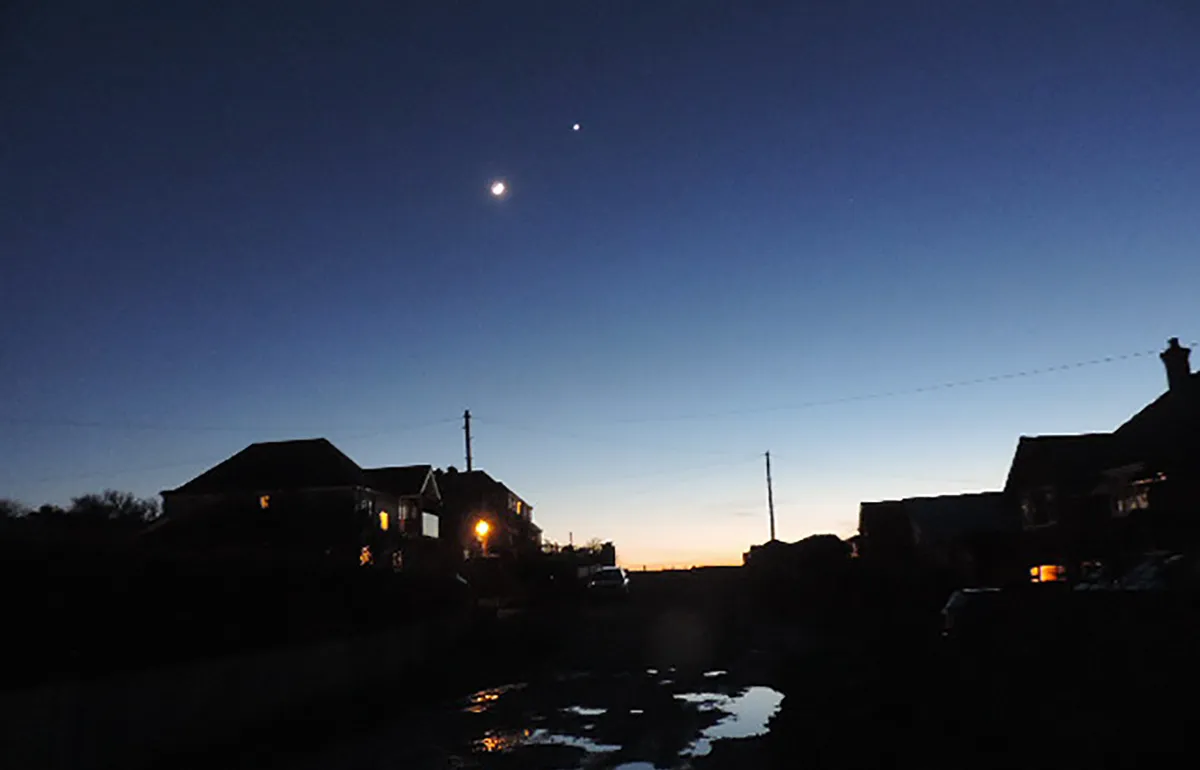Conjunction: what a funny-sounding word it is, yet in the field of astronomy this phenomenon can give us some wondrous night-sky sights, ranging from naked-eye views through to binoculars and even telescopic viewing.
There are usually a few beautiful conjunctions to see in the night sky - or early morning sky for that matter.
For more conjunctions and stargazing advice, listen to our Star Diary podcast, which reveals what to look out for in the evening and morning skies over the coming weeks.
Or read our guide on what's in the night sky tonight for more conjunctions.
You can also sign up to the BBC Sky at Night Magazine newsletter for weekly updates on what to see in the night sky.

What is a conjunction in astronomy?
Generally speaking a ‘conjunction’ is the name given to two or more celestial objects close together in the night sky.
The most commonly observed conjunctions involve the Moon, often as a crescent in the evening or morning sky, along with any of the bright planets – Venus, Mercury, Mars, Jupiter or Saturn.
Or you may find a conjunction between a planet and a planet, such as a Jupiter Mercury conjunction, for example.
Some conjunctions involve more than two objects, such as when two planets are in conjunction and are joined by the Moon, and this is also known as a 'massing'.
There are also times when incredibly close conjunctions set two objects in the same telescope field of view, or in really special cases, show Venus or Mercury transit across the face of the Sun.

Definitions of astronomical conjunction
You may already have come across the term 'conjunction' in astronomy guides, yet if we went by its strictest definition then some events called conjunctions would probably not qualify.
To be precise: a conjunction is a line-up of at least two celestial objects in the sky relatively close together that share the same Right Ascension (RA) or ecliptic longitude in the sky.
- RA is the equivalent of longitude on Earth but projected onto the celestial sphere
- The ecliptic is the plane of Earth’s orbit and appears to us as the apparent path of the Sun across the sky. Ecliptic longitude is measured along the ecliptic eastwards from the spring equinox
Even within astronomy there are different meanings of the word conjunction.
- When a planet, either outer or inner, lies on the other side of the Sun to Earth it is said to be at superior conjunction
- When an inner planet lies between Earth and the Sun it is at inferior conjunction

When conjunctions occur
Often a conjunction will occur during daytime or when the objects are below the horizon, and this is where the definition becomes more relaxed.
If the objects are very bright, such as a crescent Moon and Venus, then daylight viewing can be possible, but if the objects have set below the horizon they won’t be visible.
So conjunction can be applied in quite a loose context to refer to objects that are viewable above the horizon in twilight or at night, even if they are not, at that point, at the exact moment of conjunction.
- If the objects are at their closest, then this is known as an appulse: the minimum separation between two bodies that occurs just before or after true conjunction.
Conjunctions really capture our attention, which makes them ideal targets for public stargazing events, or for inspiring young astronomers and newcomers to look up at the night sky.
They are also easy to capture with a smartphone camera, giving more people the chance to preserve the moment and share with friends or on social media.
If you manage to capture a conjunction on camera, send us your pics by emailing contactus@skyatnightmagazine.com

